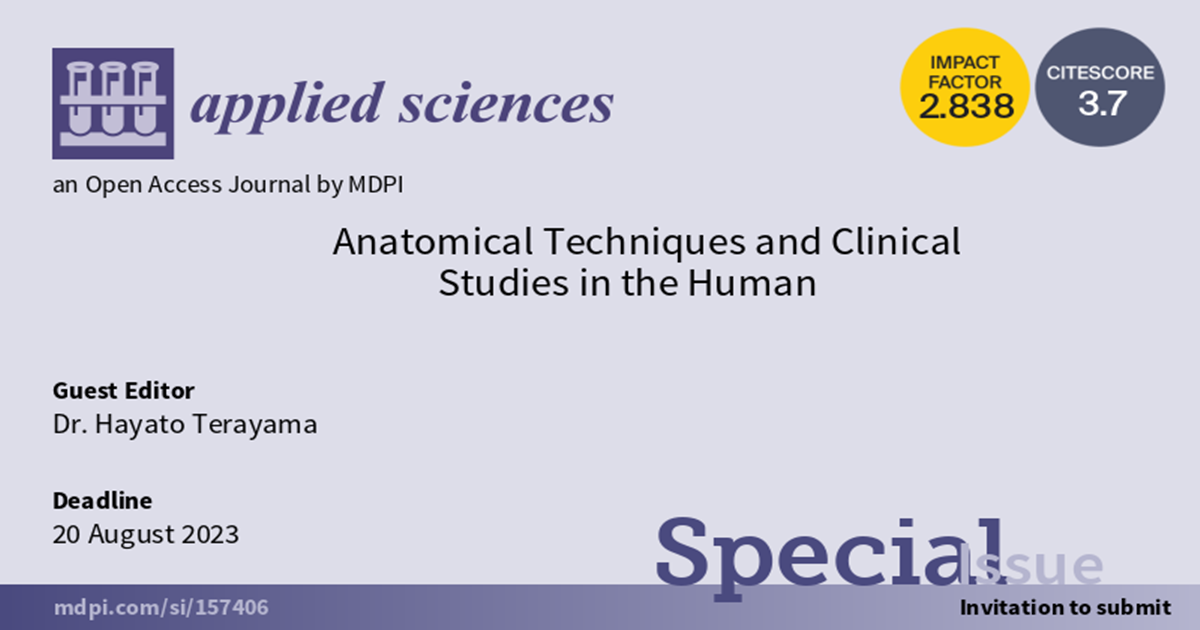Anatomical Techniques and Clinical Studies in the Human
A special issue of Applied Sciences (ISSN 2076-3417). This special issue belongs to the section "Biomedical Engineering".
Deadline for manuscript submissions: closed (20 August 2023) | Viewed by 5155

Special Issue Editor
Special Issue Information
Dear Colleagues,
Anatomy has a long history, and various morphological studies have been conducted. Human anatomy is the basis of medicine for learning not only about the structure of the human body three-dimensionally, but also about the meaning of the structure of the human body in an integrated manner. The structure formed by ontogeny and phylogeny becomes a unique structure and undergoes various forms of change. Therefore, no one has a standard structure for all organs. Anatomical variations exist in various organs, such as blood vessels, muscles, and nerves. However, the structures described in anatomy textbooks are standard structures, and anatomical variations are not often described. Anatomical variations are important for performing various actions, such as surgery, therapy, and exercise. This time, we are broadly inviting anatomical, embryological and clinical research, focusing on anatomical variations in humans.
Dr. Hayato Terayama
Guest Editor
Manuscript Submission Information
Manuscripts should be submitted online at www.mdpi.com by registering and logging in to this website. Once you are registered, click here to go to the submission form. Manuscripts can be submitted until the deadline. All submissions that pass pre-check are peer-reviewed. Accepted papers will be published continuously in the journal (as soon as accepted) and will be listed together on the special issue website. Research articles, review articles as well as short communications are invited. For planned papers, a title and short abstract (about 100 words) can be sent to the Editorial Office for announcement on this website.
Submitted manuscripts should not have been published previously, nor be under consideration for publication elsewhere (except conference proceedings papers). All manuscripts are thoroughly refereed through a single-blind peer-review process. A guide for authors and other relevant information for submission of manuscripts is available on the Instructions for Authors page. Applied Sciences is an international peer-reviewed open access semimonthly journal published by MDPI.
Please visit the Instructions for Authors page before submitting a manuscript. The Article Processing Charge (APC) for publication in this open access journal is 2400 CHF (Swiss Francs). Submitted papers should be well formatted and use good English. Authors may use MDPI's English editing service prior to publication or during author revisions.
Keywords
- anatomical variation
- anatomical technique
- human embryology
- clinical study





